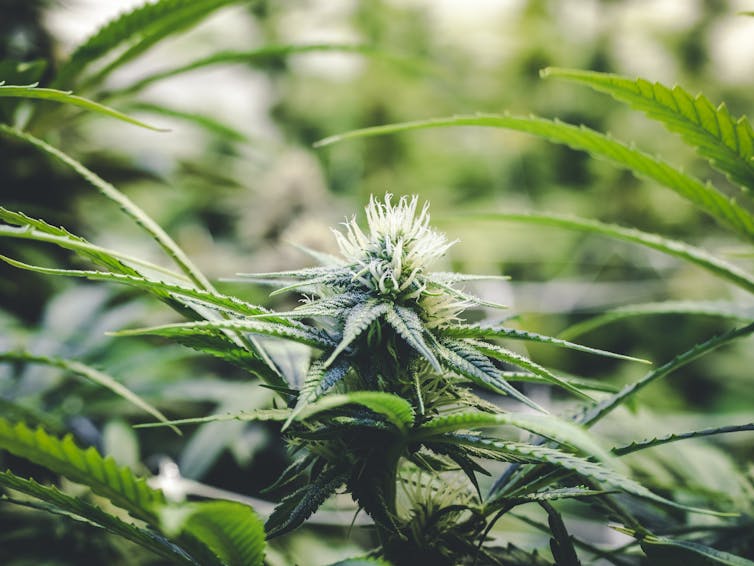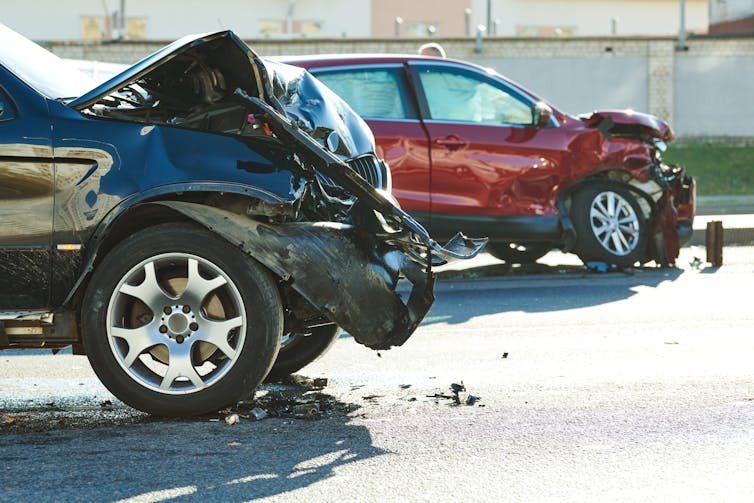Medicinal cannabis users in Victoria could soon be allowed to drive with THC in their system. Is it safe?
- Written by Amie Hayley, NHMRC Peter Doherty Biomedical Early Career Research Fellow and Senior Research Fellow, Swinburne University of Technology
Around 25,000 Australians currently use medicinal cannabis products. They may be prescribed to relieve symptoms and pain associated with certain chronic medical conditions, for chemotherapy-induced nausea, or during palliative care.
In Australia, it’s an offence for someone to drive if they’re using medicinal cannabis products containing tetrahydrocannabinol (THC, the main psychoactive component of cannabis). If they injure another person in a traffic accident, they may face criminal charges of driving while impaired.
If they’re picked up at a roadside test, they’ll be penalised in the same way as someone who tests positive to illegal drugs.
But in Victoria, this could soon change. A parliamentary bill proposing to treat medicinal cannabis users like people who use other prescription drugs, rather than illegal drug users, is gaining support.
Generally, being on medication doesn’t mean you’re not allowed to drive. It seems fair that medicinal cannabis users should be treated in the same way as people who use legal drugs.
But we also need to weigh up any potential risks. Driving a car is a complex task that requires a driver to be attentive, competent and capable.
The relationship between cannabis and driving impairment is complex
The degree to which cannabis might impair a person’s ability to drive safely often depends on how much is consumed, how long people wait to drive after using it, the strength of the psychoactive components, and the driver’s age and/or experience.
Compared with drug-free drivers, drivers with high levels of THC have modestly increased odds of being responsible for a traffic accident resulting in injury or death.
High-THC cannabis also reduces a driver’s ability to control the car or respond to unexpected situations.
It also affects a driver’s attention, and the higher the THC concentration in their system, the greater the impairment.
Conversely, some research has suggested THC has minimal or no effect on the likelihood of being involved in a crash.
Read more: Why is it still so hard for patients in need to get medicinal cannabis?
Medicinal cannabis is different to the illegal stuff
Medicinal cannabis typically contains much less of the intoxicating component (THC), and more of the components that don’t produce a “high” (cannabidiol, or CBD). Compared with THC, CBD has much less effect on mood, awareness, thoughts, feelings and behaviour.
Most often, Australian medical cannabis products are CBD-only.
It’s not clear how CBD-only treatments might affect driving, although many studies are ongoing. As it stands, patients taking CBD-only medicines can lawfully drive, as long as they are not impaired.
 Australian medicinal cannabis products are generally CBD-only.
Shutterstock
Australian medicinal cannabis products are generally CBD-only.
Shutterstock
Sometimes, medicinal cannabis products are CBD/THC-balanced or THC-dominant. How medicinal cannabis might impair a person’s ability to drive safely seems to depend how much THC is in it. CBD does not offset this intoxicating effect.
Roadside testing
In Australia, THC is a controlled Schedule 8 drug under the Poisons Standard. Victoria has a zero-tolerance drug-driving policy for controlled drugs. This currently includes medicinal cannabis products that contain THC.
Under this system, drivers are screened at the roadside for cannabis (THC), (meth)amphetamine or 3,4-Methylenedioxymethamphetamine (MDMA) using a saliva test. Drivers who return a positive result will undergo verification (additional testing of a sample sent to a laboratory) to confirm how much of a drug is present.
The minimum penalty for testing positive to THC is a six-month loss of licence and a fine. Drivers must also complete an education program.
The process is similar in other states.
Read more: Even if cannabis is legal, please don't toke and drive
Roadside tests can’t differentiate between illegal recreational and medicinal cannabis products, or determine the THC concentration.
So patients legally prescribed medications that contain THC can be prosecuted in the same way as a driver who has consumed a higher level of THC for a non-medical reason.
 High-THC cannabis reduces a driver’s ability to control the car or respond to unexpected situations.
Shutterstock
High-THC cannabis reduces a driver’s ability to control the car or respond to unexpected situations.
Shutterstock
Internationally, there’s been a move away from zero-tolerance approaches to systems that use thresholds to determine whether a person driving under the influence of THC is likely to be impaired.
Canada, and now many US states, have introduced limits of between 1, but no more than 5 nanograms of THC per millilitre of blood. This roughly equates to a blood alcohol content of 0.05%.
Penalties for having higher levels of THC are based on a graded system that factors in the level of drugs in the driver’s system, and whether the incident is a first or repeated offence. These laws apply to all drivers, including those with a medical authorisation to use cannabis.
The road ahead
As many as one in three Australian patients who use medicinal cannabis drive within three hours of taking their treatment. Some medications containing THC can be detected by roadside drug tests more than four hours after use, so patients who drive within this window may well be charged.
Determining whether patients who use medicinal cannabis products pose a risk to themselves or other road users is important for deciding what (if any) legislative changes would be appropriate. We need more research before we can move to a system like Canada or the US.
Introducing a conditional licence, subject to periodic review, may be one way of supporting people who use medicinal cannabis to drive lawfully and safely. A central registry could help law enforcement and health-care providers quickly reference what medication a driver is taking, at what dose, and for how long they’ve been using it.
As with other potentially impairing (but legal) medications, using mandatory driving hazard warning labels might be an easy way to help patients make better decisions about whether they are feeling well enough to drive when using these medications.
Read more: 1 in 10 women with endometriosis report using cannabis to ease their pain
With greater access to a wider range of medicinal cannabis products, it’s important we support the rights of patients who use these medications and continue to drive, as well as ensuring the safety of all road users.
Future decisions must include equal input from patient advocates, research groups, road safety groups and law enforcement.
Authors: Amie Hayley, NHMRC Peter Doherty Biomedical Early Career Research Fellow and Senior Research Fellow, Swinburne University of Technology





